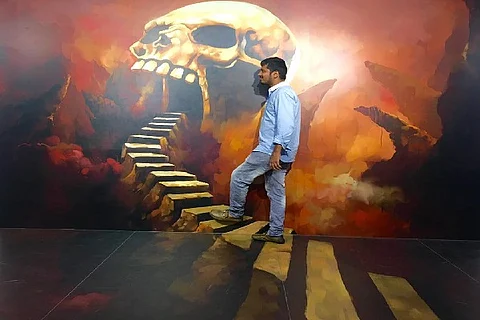

Tucked inside the vast VGP complex on East Coast Road in Chennai is India’s first trick art museum - it lets you ‘interact’ with art, literally and figuratively. From sailing in Venice and fighting with Bruce Lee, to even clicking a selfie with a Chimpanzee, the paintings exhibited in the museum create an illusion of the viewer also being a part of the painting.
The museum was inaugurated in early May, currently houses twenty-four paintings and is the brainchild of noted artist A.P.Sreethar.
He says that he took inspiration from similar museums he visited in Hog Kong, Malaysia and Singapore. “Never before had I seen people from all walks of life connect to art on that level," he exclaims.
"I knew it was going to be a challenge, but I was inspired to start working on perspective paintings,” he adds.

According to the artist, there are only 42 interactive museums across 12 countries in the world.
Sreethar’s works have been displayed in over 64 exhibitions around the world, but he claims the museum remains his best-appreciated contribution.
“I started working on the paintings three years ago. The process involved a lot of experimenting, as I wanted the paintings in the museum to be a blend of international and local flavors. The response has not only been phenomenal but has also made me realise the power of art that has the ability to strike chord with one and all,” he says.
While the paintings are directly painted on the walls, there are markings on the floor for the viewer to stand. Each painting in the museum looks complete only when the viewer enters the frame, adding perspective to it.

The history of trick art can be traced back to 2000 years and is technically referred to as ‘Trompe-l’oeil’, which means ‘deceive the eye’ in French. The motive behind the painting is to create a three-dimensional perspective to the image, when in reality the painting is only two-dimensional.